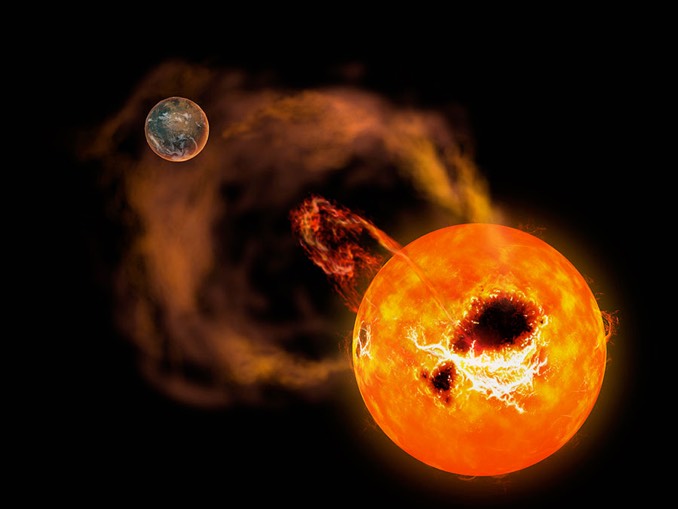
Kyoto University’s new 3.8-metre Seimei Telescope, featuring innovative petal-shaped mirror segments, has detected 12 stellar flares on the nearby red dwarf AD Leonis, including one superflare 20 times larger than those generated by Earth’s Sun.
“Solar flares are sudden explosions that emanate from the surfaces of stars, including our own Sun,” said Kosuke Namekata, first author of a paper in Publications of the Astronomical Society of Japan. “On rare occasions, an extremely large superflare will occur. These result in massive magnetic storms, which when emitted from our Sun can affect the Earth’s technological infrastructure.”
Red dwarf stars like AD Leonis, located about 16 light years from Earth, are cooler and produce more flares than Sun-like stars, but the superflare seen by the Kyoto telescope was powerful by any such standards with 10 times more high-energy electrons than seen in typical flares.
“This is the first time this phenomenon has been reported, and it’s thanks to the high precision of the Seimei Telescope,” said Namekata.

The team also noted flares in which light from excited hydrogen atoms increased without a corresponding increase across the rest of the visible-light spectrum.
“This was new for us as well, because typical flare studies have observed the continuum of the light spectrum—the broad range of wavelengths—rather than energy coming from specific atoms,” said Namekata.
Kazunari Shibata, leader of the Seimei study, said the goal of such research is to collect the data necessary to eventually predict superflares and magnetic storms that can affect technology on Earth.
“We may even be able to begin understanding how these emissions can affect the existence or emergence of life on other planets,” he said.



